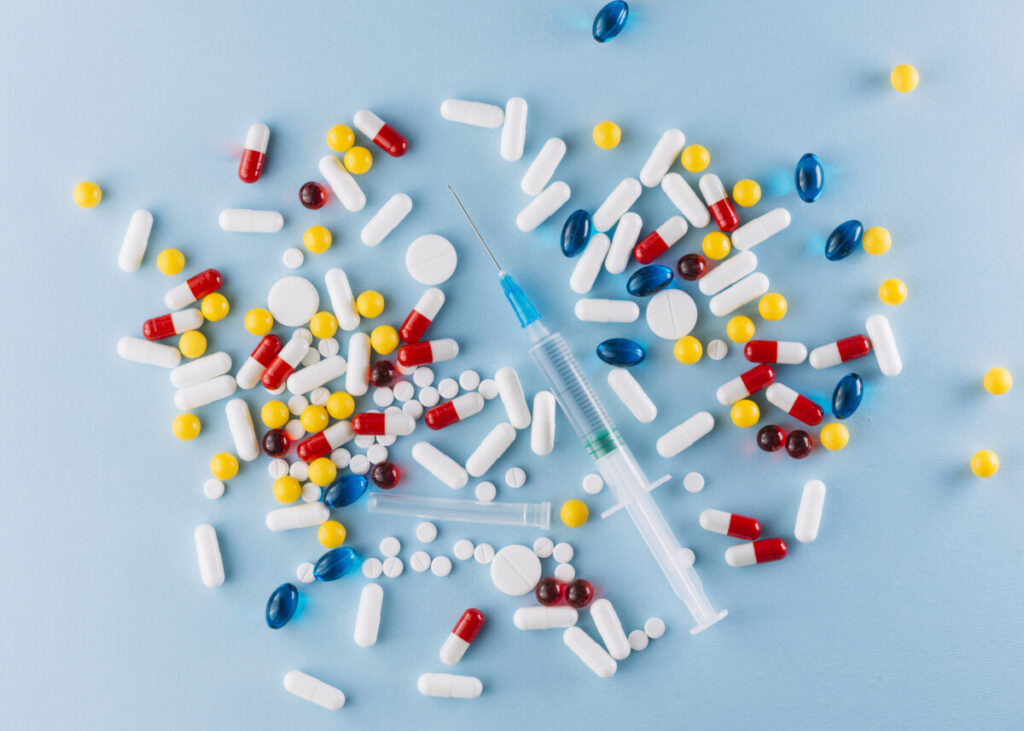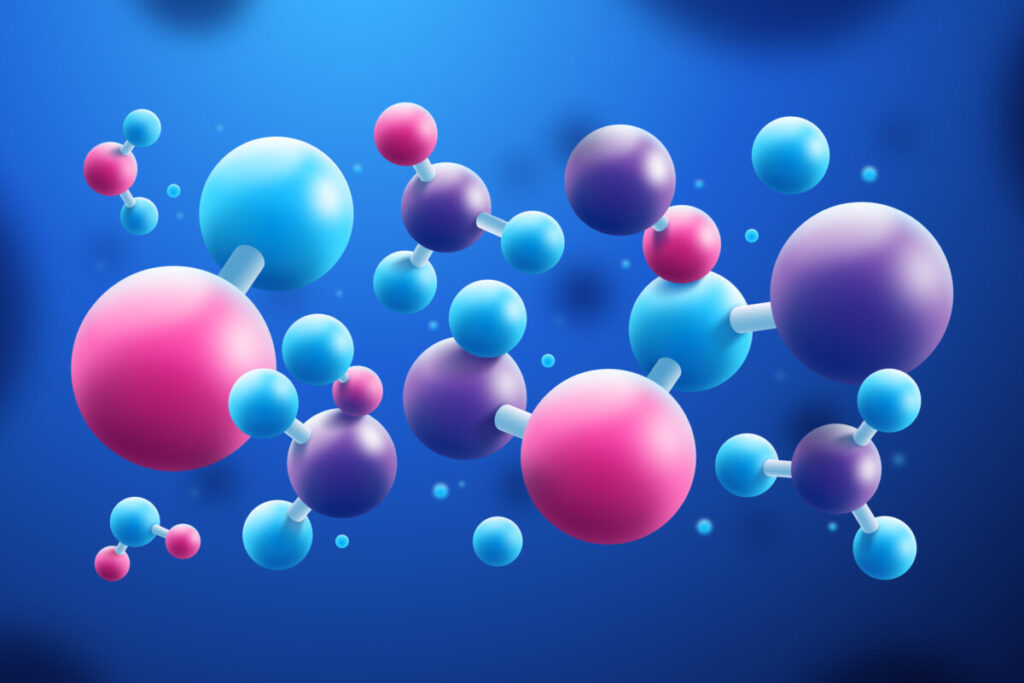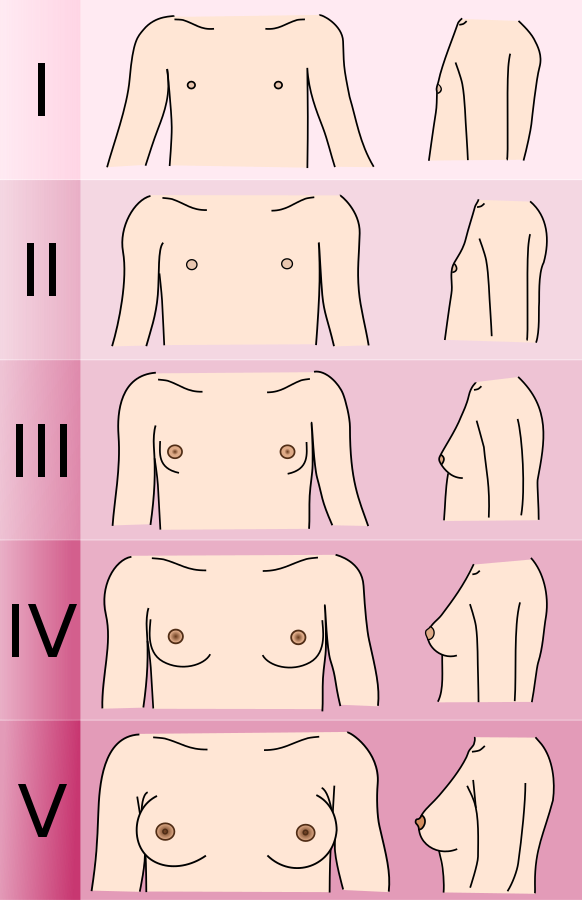
For those who are transitioning from male to female, breast development is often an important aspect of their journey. Hormone replacement therapy (HRT) is a common method used to promote breast growth and feminization of the body. However, the process of breast growth on HRT can be unpredictable, and the results can vary widely depending on a variety of factors. In this blog post, we will explore the science behind breast development on HRT, the different types of HRT available, and what you can expect during this transformative process. So, let’s dive in and learn more about breast growth on HRT for male-to-female individuals.
Hormone Replacement Therapy (HRT) - A Vital Step in Transitioning

Hormone Replacement Therapy, or HRT, is an essential part of the transitioning journey for many male-to-female (MtF) transgender individuals. HRT plays a crucial role in aligning one’s physical appearance with their gender identity, helping alleviate gender dysphoria and improve overall well-being.
At the core of HRT for MtF transgender individuals are two primary components: estrogen and testosterone blockers. Estrogen is the primary female sex hormone responsible for promoting the development of feminine secondary sexual characteristics, such as breast growth. Testosterone blockers, such as spironolactone, work to suppress the production of testosterone, the primary male sex hormone. This suppression paves the way for the desired feminizing effects of estrogen to take place.
The process of HRT often begins with a thorough evaluation and consultation with a qualified healthcare professional experienced in transgender healthcare. They will discuss the individual’s goals, risks, and potential benefits of HRT. Once informed consent is obtained, a personalized hormone therapy plan is developed. This plan typically includes prescribing the appropriate dosages of estrogen and testosterone blockers.
Throughout the course of HRT, regular monitoring of hormone levels is essential to ensure the treatment’s efficacy and safety. Adjustments to dosages may be necessary to achieve the desired results while minimizing potential side effects.
Breast growth is one of the most anticipated changes for many MtF transgender individuals undergoing HRT. This development usually occurs in stages, similar to the natural process experienced by cisgender women during puberty.
It’s important to note that the degree of breast growth experienced on HRT varies significantly among individuals due to factors such as genetics, age, and hormone levels. In some cases, transgender individuals may choose to undergo breast augmentation surgery to achieve their desired breast size and shape.
In conclusion, HRT is a vital component of the transition process for many male-to-female transgender individuals, as it facilitates the development of feminine secondary sexual characteristics, such as breast growth. With proper guidance and monitoring from a qualified healthcare professional, HRT can be a life-changing and affirming experience.
How Do Breasts Grow - Delving into the Biological Mechanisms

For those who are keen on understanding the scientific intricacies behind breast growth during HRT, this section will provide a more detailed explanation of the biological mechanisms at play.
Breast growth in male-to-female transgender individuals undergoing HRT is primarily driven by the interplay of hormones, specifically estrogen and progesterone, and their interaction with hormone receptors in the breast tissue. The process is similar to the natural breast development that occurs during puberty in cisgender females.
Estrogen, specifically estradiol, plays a crucial role in breast development. It binds to estrogen receptors (ERs), which are proteins found on the surface of cells within breast tissue. The ERs are encoded by two different genes, ESR1 (ERα) and ESR2 (ERβ). Upon binding, the estrogen-receptor complex translocates to the cell nucleus, where it binds to specific DNA sequences known as estrogen response elements (EREs). This binding activates a complex signaling cascade that leads to the transcription of target genes involved in cell growth, differentiation, and proliferation.
Progesterone is another hormone that contributes to breast growth. It works in conjunction with estrogen to stimulate the growth and branching of mammary ducts within the breast tissue. Progesterone binds to progesterone receptors (PRs), which are also present in breast cells. Similar to the estrogen-receptor complex, the progesterone-receptor complex moves to the cell nucleus, binds to specific DNA sequences called progesterone response elements (PREs), and activates the transcription of target genes.
Testosterone blockers, such as spironolactone, contribute to breast growth indirectly. By suppressing the production of testosterone, they create a hormonal environment conducive to the feminizing effects of estrogen. Spironolactone works by blocking androgen receptors and inhibiting the enzyme 17α-hydroxylase/17,20-lyase (CYP17A1), which is involved in testosterone synthesis.
It’s important to note that individual results may vary, as genetic factors, age, and pre-existing hormone levels can influence breast development during HRT. Understanding the underlying biological mechanisms that drive breast growth can provide a deeper appreciation of the complex hormonal interplay that makes this transformative process possible.
Navigating Tanner Stages - Tracking Breast Growth on HRT

Understanding the Tanner Stages can be beneficial for male-to-female transgender individuals undergoing HRT, as it helps track breast growth progress and set realistic expectations. Tanner Stages are a widely accepted method for classifying the development of secondary sexual characteristics, including breast development. Let’s explore these stages in detail and how to determine which stage one is at during HRT.
Tanner Stage 1: This stage represents the pre-pubertal phase before the onset of HRT. At this stage, there is no visible breast tissue or elevation of the nipple. Before starting HRT, male-to-female transgender individuals are typically at Tanner Stage 1.
Tanner Stage 2: Breast growth on HRT usually begins at around 3-6 months, marking the onset of Tanner Stage 2. During this stage, the breast bud forms, which is a small, tender lump beneath the nipple. The areola may also increase in diameter, and the nipple may become more prominent.
Tanner Stage 3: Typically occurring between 6-12 months of HRT, Tanner Stage 3 is characterized by further enlargement of the breast tissue and areola. The breast and areola may still appear somewhat separate at this stage, giving the breast a conical or “puffy” appearance.
Tanner Stage 4: Between 12-24 months of HRT, breast growth progresses to Tanner Stage 4. The areola and nipple form a secondary mound on top of the breast, with the areola continuing to enlarge. The breast tissue beneath the areola becomes more elevated, giving the breast a more rounded appearance.
Tanner Stage 5: Occurring at around 24-36 months of HRT or later, Tanner Stage 5 represents the final stage of breast development. In this stage, the areola and nipple become integrated with the contour of the breast, and the breast tissue achieves its mature, adult form.
To determine which Tanner Stage one is at, it’s important to closely observe the physical changes in breast size, shape, and nipple prominence. Comparing these observations with the descriptions provided can help identify the corresponding stage. Keep in mind that individual experiences may vary, and breast growth on HRT can progress at different rates depending on factors such as genetics, age, and hormone levels.
Most mtf transexuals only reach tanner stage 3 or 4. To reach stage 5 most transexuals start taking hormones too late, as the body responds best to hormones when one is younger.
In summary, tracking breast growth on HRT using the Tanner Stages can be a helpful way for male-to-female transgender individuals to monitor their progress and set realistic expectations during their transition journey.
Additional Body Changes Accompanying Breast Growth on HRT
While breast growth is a prominent aspect of HRT for male-to-female transgender individuals, several other physical changes occur simultaneously, further contributing to a more feminine appearance. Here’s an overview of some additional body changes one might experience during HRT:
Body fat redistribution: Estrogen influences the distribution of body fat, resulting in a shift towards a more feminine pattern. This typically includes increased fat deposition in the hips, thighs, and buttocks, as well as a reduction in abdominal fat.
Muscle mass reduction: HRT often leads to a decrease in muscle mass, as testosterone levels are suppressed. This reduction in muscle mass contributes to a more slender, feminine physique.
Skin changes: Estrogen can also affect skin texture and appearance. Many individuals experience softer, smoother skin with a more youthful glow during HRT.
Hair growth: While HRT may slow down or reduce facial and body hair growth, it is important to note that hormone therapy alone may not completely eliminate the need for hair removal methods such as electrolysis or laser hair removal.
Emotional changes: Some individuals report experiencing emotional changes during HRT, such as increased mood fluctuations or heightened sensitivity. These changes may be attributed to the shifting hormonal balance in the body.
Libido and sexual function: HRT can lead to changes in sexual desire and function. Some individuals may experience a decrease in libido and alterations in sexual response, such as reduced erections or changes in orgasmic sensation.
It’s important to remember that these changes, like breast growth, may vary among individuals and can be influenced by factors such as genetics, age, and hormone levels. Monitoring these additional body changes can help create a more comprehensive understanding of the overall transition progress and assist in setting realistic expectations for the HRT journey.
Additional Facts About Breast Growth and HRT
To wrap up this comprehensive guide on breast growth during HRT for male-to-female transgender individuals, here are some interesting facts about the changes that may occur:
Permanent breast growth: Once breast tissue has developed during HRT, the growth is generally permanent, even if hormone consumption is stopped. While the breasts may shrink slightly, the tissue will not disappear completely.
Temporary fat redistribution: The fat redistribution that occurs during HRT is not permanent. If HRT is stopped, fat is likely to return to its previous distribution pattern, potentially reversing some of the feminine body contours achieved during treatment.
Lactation potential: The breast tissue developed during HRT is theoretically capable of producing milk. For more information on this topic, check out another post linked HERE.
Herbal alternatives: Some individuals may explore using herbal supplements as an alternative to HRT for breast growth. While results may vary and scientific evidence is limited, there is a guide available for those interested in this approach, which can be found HERE.
I hope this comprehensive guide has provided valuable insights and information to help you better understand the process of breast growth during HRT for male-to-female transgender individuals. May your journey towards self-discovery and affirmation be a fulfilling and empowering experience.

I just couldn’t depart your website before suggesting that I extremely enjoyed the standard info a person provide for your visitors? Is gonna be back often in order to check up on new posts
From now on i plan to post again more regulary.
is the breast growth painful or you do not feel anything?
Hello,
Thank you for raising such an insightful question; it’s certainly worth addressing in the post. Addressing your query, it’s quite challenging to provide a definitive answer as individual reactions can vary significantly. Additionally, the intensity of itchiness or discomfort often correlates with the quantity of phytoestrogen consumed.
Generally speaking, while breast growth is typically not described as painful per se, many individuals experience heightened sensitivity and soreness around the nipple area. This increased sensitivity can sometimes lead to discomfort upon touch.
I hope this clarifies your question to some extent. Please feel free to reach out if you have any further queries or concerns.
thank you.
another question: if I will take pill such as estrosmart it would cause my breast growth?
Hello,
Thank you for your question! I took a moment to check the ingredients in Estrosmart, and I appreciate your curiosity. Regrettably, it seems that Estrosmart is primarily designed to regulate hormones in women rather than being rich in hormones itself.
If you’re specifically aiming for breast growth, I’d recommend exploring supplements that are rich in phytoestrogens. This is because, especially for biological men, the levels of estrogen—whether synthetic or phytoestrogen—should be carefully considered, as the amount needed for it to be effective on men, is much higher than the dose a woman should ingest. In such cases, achieving noticeable effects often involves not only increasing estrogen but also suppressing testosterone.
I hope this information proves helpful on your journey. If you have further questions or need more guidance, feel free to reach out, if its not easy to answer, i might even write a post about it.
Don’t worry, it’s a good question, and by answering it here, it might help others who have the same question.
I started Hrt about 2 months ago and I’m definitely in Tanner 3. Is this typical ? I’m not complaining at all, just wondering, if anyine else has experienced this and what this means for my breast development.
Hello Abigal,
Firstly, congratulations on reaching Tanner stage 3; that’s an achievement that most reach after a way longer periode. Addressing your question, experiencing such significant growth within just two months is quite uncommon. Typically, most individuals begin to notice changes in the second or third month, with Tanner stage 3 being a milestone that many only start to approach after sometimes years.
For your peace of mind, I’d recommend conducting regular checks for any unusual lumps or sensations. Additionally, it would be prudent to consult with your healthcare provider who prescribed the hormones. While I don’t intend to cause concern, ensuring your well-being is paramount. That said, if everything checks out well, then you’re indeed fortunate to have an incredible response to hormone therapy.
I’m interested in HRT, but the breast growth is what scares me. It’s a permanent decision, and it’s something that would affect me every day. If it were just the other effects, I would feel way less hesitant.
Hi, I’m really sorry, but I don’t think I can give you a lot of valuable solutions to this problem. Sure, some people do not experience breast growth at all during HRT. Further, if you only take small amounts of estrogen and don’t add a testosterone blocker, you are likely to only have smaller changes, but none of these are certain, as your body might react differently to it than somebody else might. But does the breast growth scare you because you don’t want them or because you are worried about the opinions others might have, or another entirely different reason? It’s important to explore these concerns further to make an informed decision about HRT.
Im 60 years old and just started HRT. I keep reading about the bodies response to HRT and age being a major factor. Is it possible to develop breast growth at this late age?
Hi, yes, breast growth can still happen when you start HRT at 60, but it’s important to note that the growth one experiences is different for everybody. The average results are usually about a B cup. Regarding age, as one ages, the growth and building of new tissue slows. However, to give you some peace of mind, I have spoken with a man (he was not transgender but wanted breasts anyway), I think he was close to being 70, and he still was able to almost reach a C cup. So you can certainly get growth. In the next few days, I will write a post on increasing breast growth during HRT, so if you don’t notice any growth, you can have a look at the options; maybe something there will help you.
can I send to someone pictures of my breast?
i would like someone to tell me if it is growing of it is something else happening
please let me know. if yes,to which email can I send some pictures
sorry for the late reply, I havent been as active on my blog as I wish I was. you can send it to mif you still want at [email protected]. Though I have to repeat, I am no professional I can only make some assumptions and maybe give a few tips.
You really make it appear really easy together with your presentation but I to find this matter to be really something that I think I would by no means understand. It sort of feels too complicated and very huge for me. I’m looking forward on your next put up, I will attempt to get the grasp of it!
I like reading and I believe this website got some truly utilitarian stuff on it! .
Wow, this guide was really informative! I’m pretty new to learning about HRT and breast growth, so I found it super helpful. I had no idea there were so many factors involved, like the Tanner Stages and how different hormones work together. It’s really fascinating but also a bit overwhelming! Thanks for breaking it down into something more understandable. I’m definitely going to keep reading and learning more about this topic.
I’m a 52yo male who’s a little over weight, and who already has decent sized breasts. It’s been suggested in the past that I take mht to help reduce my breast size, so I’d assume I’m already running on low testosterone. My question, will mtf ert increase the sensitivity in my breasts, my breast tissue especially? I’d assume they’d fill out quite quickly, but aside from nipple sensitivity, which is already extreme, what about the breast tissue itself?
My girl goes nuts with breast play, and I want to know if my breast changes will bring on a similar breasts sensitivity in my breasts. I cannot find this info anywhere, so it’d be an enormous help if you could tell me…. Also, why or why not, and how long before these changers occur? Thank you. I loved the article.
You may not find extensive information on this topic, but based on what I’ve learned over the past few years, it’s highly likely that your breast tissue will become significantly more sensitive. This sensitivity may approach that of the average cis woman; however, just as every cis woman’s sensitivity varies, so does that of AMAB individuals. It’s also important to remember that during the initial months of tissue growth, you may experience soreness and discomfort.